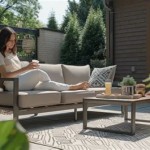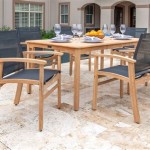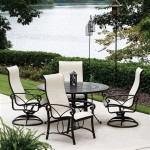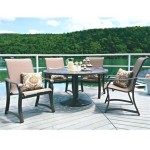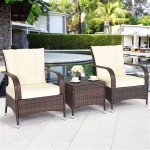Designing The Perfect Patio Furniture Layout Planning Guide
Creating an inviting and functional patio space requires careful planning, particularly when it comes to furniture layout. A well-thought-out arrangement enhances the usability of the area, encourages relaxation and socialization, and complements the overall aesthetic of a home. This guide provides a comprehensive approach to designing the perfect patio furniture layout, considering various factors that contribute to a successful outdoor living space.
Before purchasing any furniture, it is essential to thoroughly assess the existing patio area. This involves measuring the dimensions of the space, noting any permanent structures, and considering the surrounding environment. Understanding the layout and identifying any limitations will help guide the selection and arrangement of furniture.
Begin by sketching a rough outline of the patio space on paper. Include the dimensions and mark the location of any existing features, such as doors, windows, walls, trees, or built-in elements like outdoor kitchens or fireplaces. This visual representation serves as a foundation for experimenting with different furniture layouts.
Consider the intended use of the patio. Is it primarily for dining, lounging, entertaining, or a combination of activities? The primary function dictates the type and quantity of furniture needed. For example, a dining-centric patio requires a table and chairs, while a lounge area needs comfortable seating options like sofas, armchairs, or daybeds.
After determining the primary function, start considering the traffic flow. The layout should allow for easy movement within the space, preventing obstructions and uncomfortable bottlenecks. Ensure there is ample space to walk between furniture pieces and around the perimeter of the patio.
Understanding Patio Space Dimensions
Accurate measurements are crucial for effective patio furniture layout planning. Use a measuring tape to determine the length, width, and height (if applicable) of the patio area. Record these measurements on the sketch. Consider the scale of the furniture relative to the size of the patio. Overly large furniture can overwhelm a small space, while undersized pieces may appear lost in a larger area.
When measuring, account for any irregular shapes or angles in the patio design. Segment the area into smaller, more manageable sections if necessary. This simplifies the process of estimating the space available for furniture placement. Remember to note the locations of any obstacles, such as steps or uneven surfaces, which may affect furniture stability or placement.
Consider vertical space as well. Overhanging structures, such as pergolas or awnings, define the usable height of the patio. Ensure that any taller furniture pieces, like umbrellas or vertical planters, fit comfortably under these structures without obstructing views or pathways.
Documenting the dimensions accurately and thoroughly provides a reliable foundation for making informed decisions about furniture selection and arrangement, minimizing the risk of errors and ensuring a harmonious and functional patio design.
Selecting Appropriate Patio Furniture
Choosing the right patio furniture is essential for creating a comfortable and aesthetically pleasing outdoor space. Several factors influence the selection process, including materials, style, comfort, and durability. Selecting furniture that aligns with the overall design aesthetic and withstands the elements is crucial for long-term enjoyment of the patio.
Consider the climate and weather conditions in the area. If the patio is exposed to direct sunlight, choose materials that are resistant to fading and heat. If it's prone to rain or humidity, opt for weather-resistant materials like teak, aluminum, or synthetic wicker. Avoid materials that are susceptible to rust, mildew, or warping in wet conditions.
Prioritize comfort when selecting patio furniture. Opt for pieces with ergonomic designs, comfortable cushions, and supportive backrests. Consider adding throw pillows and blankets to enhance comfort and create a cozy atmosphere. The level of comfort contributes significantly to the usability and enjoyment of the patio space.
Different styles of furniture contribute to different aesthetics. Furniture options should complement the architectural style of the home and the overall landscaping. Choose furniture that reflects personal preferences and creates the desired atmosphere, whether it's modern, traditional, rustic, or eclectic.
Budgetary considerations also play a significant role in furniture selection. Determine a realistic budget before beginning the shopping process. Compare prices from different retailers and consider investing in high-quality pieces that will last for many years. Prioritize comfort and durability over purely aesthetic appeal to ensure long-term satisfaction.
Consider the storage options for the furniture during the off-season or inclement weather. Foldable or stackable furniture is ideal for smaller patios or for those with limited storage space. Furniture covers provide protection against the elements and extend the lifespan of the pieces. Proper storage helps maintain the quality and appearance of the furniture.
Arranging Furniture for Functionality and Aesthetics
The arrangement of patio furniture significantly impacts the functionality and visual appeal of the outdoor space. A well-planned layout optimizes the use of the area, facilitates conversation and interaction, and creates a welcoming atmosphere. Consider several key principles to achieve a successful patio furniture arrangement.
Define zones within the patio based on their intended use. For example, create a dining zone with a table and chairs, a lounging zone with comfortable seating and a coffee table, and perhaps a separate zone for sunbathing or reading. Zoning helps organize the space and creates a clear distinction between different activities.
Focus on focal points within each zone. A focal point can be a fireplace, a water feature, a striking piece of art, or a beautiful plant. Arrange furniture around the focal point to draw the eye and create a sense of visual balance. The focal point serves as an anchor for the entire layout.
Conversation areas should be arranged to facilitate easy communication. Place chairs and sofas in a face-to-face configuration to encourage interaction. Ensure that the distance between seating pieces is not too great, allowing for comfortable conversation without having to raise voices. Aim for a distance of no more than eight feet between seats in a conversational grouping.
Consider the flow of traffic throughout the patio. Create clear pathways to avoid obstructions and ensure easy movement between different zones. Avoid placing furniture directly in the path of doors or windows. The arrangement should be intuitive and prevent any awkward or uncomfortable movements.
Use rugs to define spaces and add warmth and texture to the patio. Outdoor rugs help anchor furniture groupings and create a more inviting atmosphere. Choose rugs that are weather-resistant and easy to clean. A rug can also help to visually separate different zones within the patio.
Add lighting to enhance the ambiance and extend the usability of the patio into the evening. String lights, lanterns, and outdoor lamps create a warm and inviting atmosphere. Consider the placement of lighting fixtures to illuminate pathways, highlight focal points, and provide adequate task lighting for dining or reading. Lighting plays a crucial role in setting the mood and extending the enjoyment of the patio.
Incorporate plants and greenery to create a natural and relaxing environment. Potted plants, hanging baskets, and vertical gardens add visual interest and soften the hardscape of the patio. Choose plants that are appropriate for the climate and the amount of sunlight the patio receives. Greenery enhances the overall aesthetic and promotes a sense of tranquility.
Regularly assess and adjust the furniture layout as needed. Experiment with different arrangements to find what works best for the space and the intended use. Consider seasonal changes and adjust the layout accordingly to maximize comfort and functionality. Continual assessment and adjustment ensures that the patio remains a comfortable and enjoyable outdoor space.
Selecting furniture with varying heights adds visual interest and layering to a patio's horizontal plane. A tall umbrella placed between low seating and a mid-height dining table creates a more dynamic and engaging visual experience, and keeps the eye moving. This depth and layering makes for a more inviting outdoor room.
Ultimately, the perfect patio furniture layout will reflect the homeowner's personal style and cater to their specific needs. The goal is to create a functional, comfortable, and aesthetically pleasing outdoor space that enhances the enjoyment of the home and the surrounding environment. By carefully considering the dimensions of the space, selecting appropriate furniture, and arranging it thoughtfully, a patio can become a true extension of the home, providing a welcoming retreat for relaxation and entertainment.

The Ultimate Guide To Choosing Perfect Patio Furniture For Summer Lifestyle M Interior Design

26 Best Patio Decorating Ideas Decor On A Budget

Ultimate Outdoor Year Round Entertaining Space Guide Shrubhub

A Guide To Help You Create The Perfect Dining Area

50 Patio Ideas For The Backyard Of Your Dreams

A Buyer S Guide To Choosing The Right Outdoor Furniture Seattle Times

Your Ultimate Guide On The Perfect Patio Furniture Shrubhub

9 Small Patio Designs With Big Impact Romanstone Hardscapes

Palm Casual S Guide To Creating The Perfect Outdoor Space In Summerville

Creating A Beautiful And Functional Outdoor Living Space Guide
See Also

